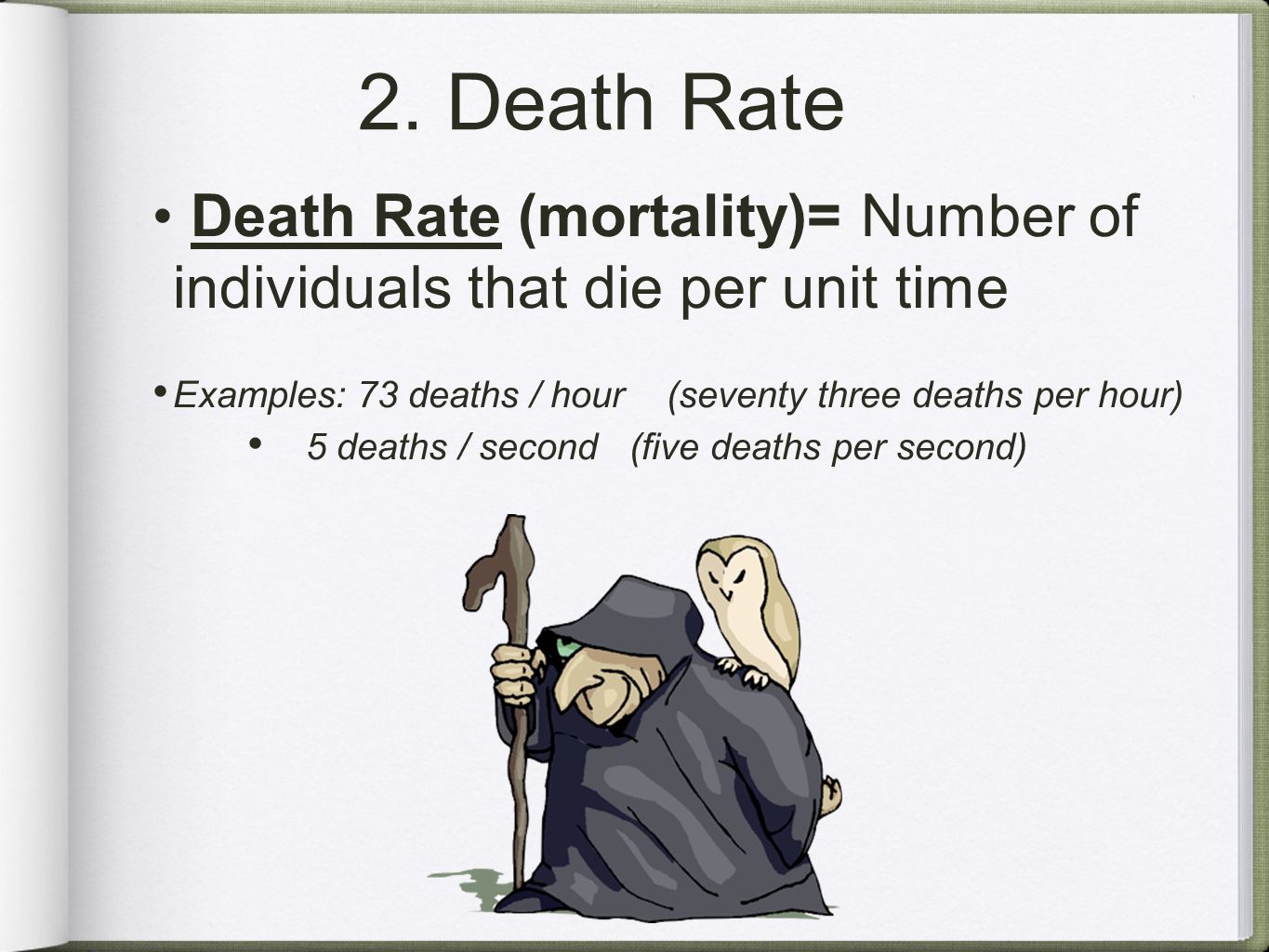The death rate is also known as the mortality rate and it is measured in the number of deaths in the specific populations, scaled to the size of that population per unit of time. Typically, it is expressed as the death of a thousand individuals of a species, per year. It is the measurement of the frequency of the deaths in a defined population, during a specific period. Death rate greatly affects the population dynamics.

Factors Affecting Death Rate
The growth of population in space and time is largely controlled by the death rate. The death rate is stimulated by the various biotic, abiotic, density-dependent, and density-independent factors. Death may be accelerated due to competition for the available resources. Mortality significantly affects population density. Population growth and density are affected by various factors. When the population is increasing continuously, its growth reaches a constant level. Different abiotic factors that accelerate the death of individuals include the physical and chemical effects of the environment. These factors influence the mortality of the population regardless of their density. They include pollution, natural disasters, and the weather.
In the population ecology, the mortality rate is also influenced by the density-dependent factors, and it regulates the density of the population in a specific zone over a certain range of time. The mortality rate of the prey or predator is strongly dependent on their densities. The intraspecific, and the interspecific competition significantly promotes the death rate.
Competition and Depletion of Resources Favors Death Rate
When the maximum population is obtained, then there starts a competition for use of resources. As the population goes on increasing, the available resources for survival start depleting and become less in the number. Which in turn results in the massive mortality of the individuals of the population. Each environment has a specific carrying capacity, and can only sustain the pressure of the population at a specific level.
Once the population attains the maximum level of the growth, its individuals must have to experience the mortality. This mortality factor is essential to keep and bring a balance in nature. Death may be the result of competition. Competition occurs when the resources are limited. One species may not be able to use that resources, and ultimately all of the individuals will die. The mortality may also be favored due to the harsh environmental conditions. For example, the high and too low temperatures cause the death of many individuals, when they could not effectively adapt themselves to the changing conditions.
